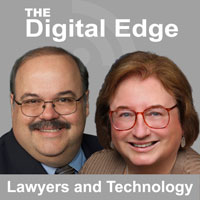Ride the Lightning
Cybersecurity and Future of Law Practice Blog
by Sharon D. Nelson Esq., President of Sensei Enterprises, Inc.
Divorce Attorneys Struggle with Faked Cell Phone Evidence in Court
August 25, 2020
In a story reported by LAW.COM, a lawyer recounted a case in which wife submitted text messages as evidence of domestic violence and threats made by her husband. The threats in the text messages were graphic. Husband had earlier gotten temporary custody of the three minor children after he learned that wife's boyfriend had been arrested for significant domestic violence in front of the children.
Wife then filed a Domestic Violence Restraining Order (DVRO) against Husband (she had not lived with him or seen him for several years) and took the kids back from him—now with no visitation pending resolution of the domestic violence issues stemming from the threats in the text messages that she alleged he had sent her. The lawyer recounting the story said the messages were ominous and deeply threatening and that any judge in their right mind would have granted a Temporary DVRO on the basis of this evidence.
You can probably guess that she faked the evidence. It was ridiculously simple. She changed the name associated with someone else's number in her phone to Husband's name. Then she had the person who had that number send her the threatening texts. When she printed the text messages, Husband's name in her "contacts" list appeared at the top of the screen to make it look like he sent the message.
In California, a judge reviews a Domestic Violence Temporary Restraining Order request in written pleadings without notice to the other party. If there is written evidence, the applying party submits it with the application. The judge does not hear from the other party. California law permits the grant of a 21-day Temporary Restraining Order without a hearing. After 21 days, the restrained party is entitled to a hearing. But we all know what happens in real life – hearings get delayed for various reasons.
The hearing on the DVRO was continued for almost four months. Husband did not see the children for four months, despite the court initially awarding Husband full custody of the children because of the violence in Wife's home. When the trial finally arrived, the attorney proved that the messages were faked by bringing in the husband's monthly statement showing that he never sent her any text messages on that day or any day in the previous months. The Judge dismissed the DVRO, but she did not award him full custody of the kids.
I have some trouble understanding that. She apologized to him for not allowing him to see the children for four months, but she just restated the prior custody orders.
Another case? Sure.
Mother looked at a 5-year-old's iPad and discovered photos of Father nude and engaged in sex acts. She filed these photos in a Child Welfare Services case and law enforcement got involved. The family court made a finding (without evidence, because Mother did not have a lawyer) that the photos had been faked and ordered that the children live with Father. It took six months to get hold of the iPad and have it examined by a computer forensics expert. The result was a finding that no one put the photos on the iPad – they synced and downloaded automatically from Father's iCloud.
The potential undetectable manipulation of cell phone evidence makes it suspect. Manipulating the evidence is becoming much cheaper and easier. It is still true that, most of the time, cell phone data has not been manipulated. And that data is often the only evidence of violence and violent threats.
What do we do? Judges will need to grant DV-TRO requests where the evidence calls for them, then accelerate timelines quickly—no continuances on 21-day DV-TRO requests without proof of the legitimacy of the data. This would be akin to a criminal preliminary hearing where the district attorney must prove that there is enough evidence to go forward with a criminal trial. Judges could also require that evidence be submitted with proof from third-party digital forensics experts that the evidence has not been faked, but they should not rely on that for the emergency restraining orders given in the context of a DV-TRO.
Parties using on unmanipulated electronic evidence should tender as much corroborating evidence as possible, and judges should punish parties who do manipulate data by making referrals to the District Attorney's office for perjury. With that advice, I wholeheartedly agree!
Sharon D. Nelson, Esq., President, Sensei Enterprises, Inc.
3975 University Drive, Suite 225|Fairfax, VA 22030
Email: Phone: 703-359-0700
Digital Forensics/Cybersecurity/Information Technology
https://senseient.com
https://twitter.com/sharonnelsonesq
https://www.linkedin.com/in/sharondnelson
https://amazon.com/author/sharonnelson

